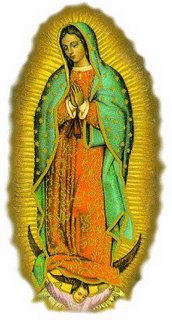
More Than a Dream: How One School's Vision Is Changing the World by G.R. Kearney
Jim Gartland walked toward a group of four gangbangers who stood in the shadows next to a brick building, just beyond the yellow light cast by a a nearby street lamp. He was scared. Their gang affiliation was clear in the way they wore their clothes, their hair, their shoes. They were out on patrol. It was a hot night in September, and Gartland--dressed in a Roman collar, comfortable chinos, and a pair of Teva sandals--was walking the neighborhood and talking to people. He slowly approached the group, his hands in his pockets, and tried to look self-assured. He knew they were watching him His white face shone in a sea of Latinos.If you had told me at the beginning of the weekend that I'd be reading a book about a school start-up and absolutely riveted, I'd have scoffed.
This was one of Gartland's first face-to-face-interviews, and it's worth nothing that as he approached the young gang members, no one had his back. In a literal sense, he walked the streets alone, following the clearest orders he received form his superiors, to "go out and meet people and tell us what, if anything, we should do." In a figurative sense, Gartland was conducting the feasibility study with very little support from his fellow Jesuits. Even as he walked the streets, many of them were voicing their opposition to the idea of a new ministry, particularly a school. ...
As Gartland drew near the gangbangers standing in the shadows, they turned slowly to face him. He was surprised by how young they seemed, with thin mustaches and beards, and tattoos emblazoned on their shoulders and arms. Still, they succeeded at appearing menacing. Gartland could barely manage to say, "Hi , guys."
As happens so often, I'd have been wrong.
This is a book of all the little stories that add up to a big picture, in this case the opening of a school based on a completely original learning approach in the poor Hispanic ghetto laden with crime, gangs, and no dreams of a future. We see intertwined the lives of students, the lives of those who will run the school, and the unfolding of the story in a compelling documentary style. I am loathe to share many of the details of the story because part of what has left me so fascinated is watching each hurdle arise and actively wondering how it is going to be overcome. This is not only an amazing story, it is storytelling in a immersive style as we travel with each person on the way. We not only see the personalities, they share with us their personal growth along the way.
The rope course was a hit with the students and an epiphany for Kendall. "At the end of the day, the students were all climbing this wall and I remember one of the girls looking up and saying, 'I'm not going.' I said, 'I won't force you. But you should try. I'll go up there with you.' I thought it'd be a piece of cake.It is also an education into those who would label the Jesuit order as being of a "type." It is a reminder that there are many good people who want to make a difference but simply don't know how until they are offered the opportunity. It is a wake up call that many of those mired in gangs and crime don't aspire to that life, they simply have no clue of how to live a "normal" life that seems as far from their experience as a moon landing.
"We climbed the wall, and when I got up there, I started looking down. I kept telling myself I was safe--I was strapped into a safety harness and wearing a helmet--but every part of my body was telling me I wasn't. My legs were shaking and my heart was pounding. It was really scary. I only realized then how much I'd been asking the students to do. All year I'd been telling them they had noting to be scared about at work. Standing up on the ropes course, I realized how I hadn't been aware of their fear. When we came down, the girl looked up at the wall and said, 'You know, Mr. Kendall, I never thought I could do that, but I did.' She was just gazing up at the wall. And that's when I realized that this was the best thing we'd done all year. I wanted every one of our students to be able to say, 'I never thought I could, but I did.'"
... During admissions interviews, Kendall, Judy Murphy, and Rosy Santiago learned that some of the incoming students had literally never left their neighborhoods. Some had never been downtown, never been in an elevator or on an escalator ...In spite of all this ... the lack of funds, the lack of interest on the part of most potential students, the lack of any sensible model to follow, the fear and opposition of those who saw it threatening established schools ... a diverse group of people all found themselves immersed in the dream to serve those who needed it most and who could themselves help to make a difference in the neighborhood of Pilsen. The story is compelling and you will want to read it.
Kudos to Loyola Press for continuing to publish books (They Come Back Singing, A Jesuit Off-Broadway) that take us into other, sometimes uncomfortable, parts of society and our world to remind us that our cozy little corners are not the only thing there is and that God is at work in all of them.


